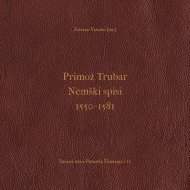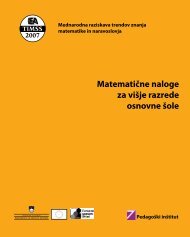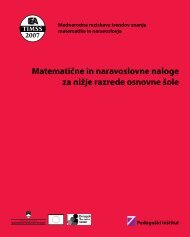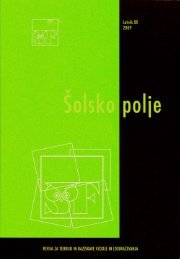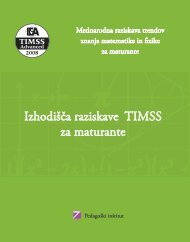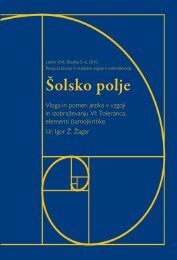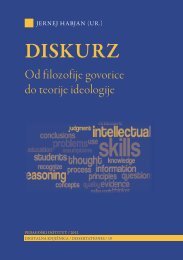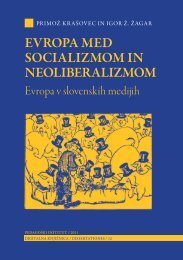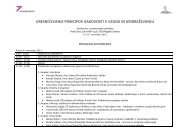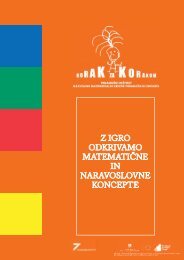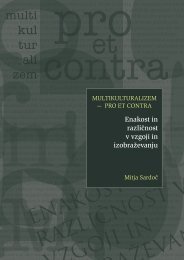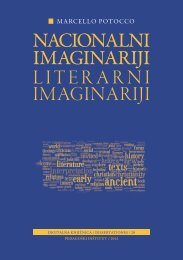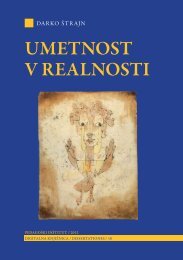Šolsko polje, letnik XX, številka 5-6, 2009: Vloga ... - Pedagoški inštitut
Šolsko polje, letnik XX, številka 5-6, 2009: Vloga ... - Pedagoški inštitut
Šolsko polje, letnik XX, številka 5-6, 2009: Vloga ... - Pedagoški inštitut
You also want an ePaper? Increase the reach of your titles
YUMPU automatically turns print PDFs into web optimized ePapers that Google loves.
TOPOI IN CRITICAL DISCOURSE ANALYSIS69that for every place we can find an opposite place: to the superiority oflasting, which is a classic place, we could oppose the place of precarious,of something that only last a moment, which is a romantic place.And this repartition gives us the possibility to characterize societies,not only in relation to their preference of certain values, but alsoaccording to the intensity of adherence to one or another member of theantithetic couple.This sounds like a good research agenda for CDA, as far as its interestin argumentation is concerned: to find out what views and valuesare dominant in different societies, and characterize these societiesby reconstructing the topoi that underlie their discourses. But inorder to be able to implement such an agenda - an agenda that is actuallyvery close to DHA’s own agenda -, DHA should dismiss »the list of (prefabricated)topoi« that facilitates and legitimizes its argumentative endeavorsomehow beforehand (the topoi are already listed, we just have to checkour findings against the background of this list of topoi), and start diggingfor the topoi in concrete texts and discourses.How does it achieve that?Curiously enough, the same year that Perelman and Olbrechts-Tytecapublished their New Rhetoric, Stephen Toulmin published his Uses ofArgument, probably the most detailed study of how topoi work. I say »curiouslyenough« because he doesn’t use the terms »topos« or »topoi«, butthe somewhat judicial term »warrant«. The reason for that seems obvious:he is trying to cover different »fields of argument«, and not all fields of argument,according to him, use topoi as their argumentative principles orbases of their argumentation. According to Toulmin (1958/1995: 94-107),if we have an utterance of the form, »If D then C« – where D stands for dataor evidence, and C for claim or conclusion – such a warrant would act asa bridge and authorize the step from D to C (which also explains whereManfred Kienpointner’s definition of topos comes from: not from Aristotlebut from Toulmin). But then, a warrant may have a limited applicability,so Toulmin introduces qualifiers Q, indicating the strength conferredby the warrant, and conditions of rebuttal (or Reservation) R, indicatingcircumstances in which the general authority of the warrant would haveto be set aside. And finally, in case the warrant is challenged in any way, weneed some backing as well. His diagram of argumentation looks like this:



